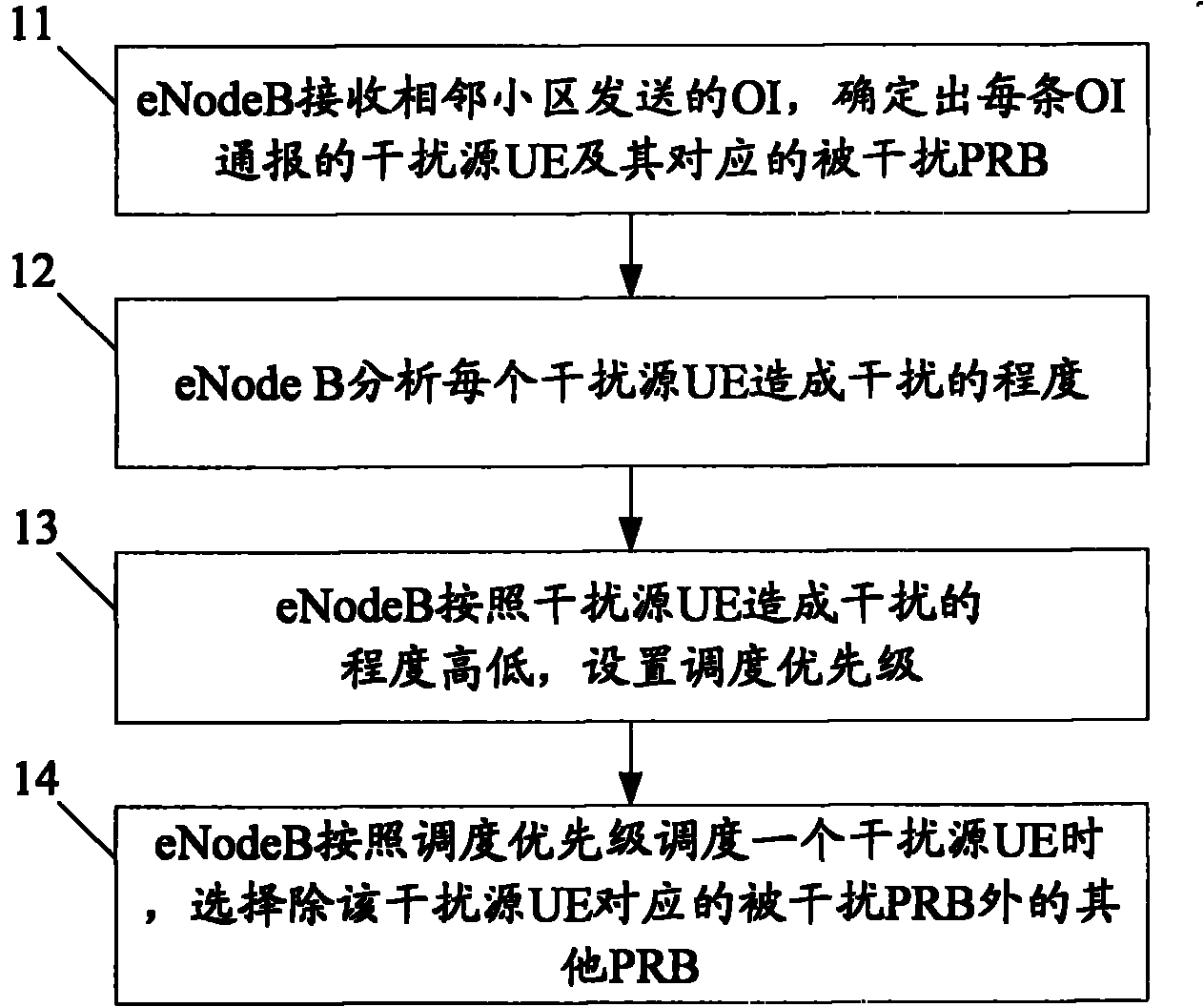Method and device for reducing inter-cell interference
A technology of inter-cell interference and cell, applied in electrical components, wireless communication, etc., can solve the problems of reducing UE transmission power, reducing the overall performance of the LTE system, resource waste, etc., and achieve the effect of avoiding repeated interference
- Summary
- Abstract
- Description
- Claims
- Application Information
AI Technical Summary
Problems solved by technology
Method used
Image
Examples
Embodiment 1
[0036] In this embodiment, the serving cells of UE0 and UE1 are cell 3, and cell 0, cell 1 and cell 2 are adjacent cells of cell 3. figure 2 It is a schematic diagram of cell interference in this embodiment.
[0037] The process in this embodiment includes the following steps:
[0038] Step 21: The eNode B of cell 3 receives the OIs sent by cell 0, cell 1, and cell 2 respectively. The OI sent by cell 0 notifies that UE0 interferes with PRB0 of cell 0, and that UE1 interferes with PRB5 of cell 0. Cell 1 The sent OI notifies that UE0 interferes with PRB0 of cell 1, and the OI sent by cell 2 notifies that UE0 interferes with PRB0 of cell 2, and that UE1 interferes with PRB5 of cell 2.
[0039] Step 22: The eNode B of cell 3 respectively determines the number of cells that are interfered by UE0 and UE1.
[0040] In this step, the eNode B of cell 3 determines that the number of OIs notified to UE0 is 3, thereby determining that the number of cells causing interference by UE0 is ...
Embodiment 2
[0044] In this embodiment, the serving cells of UE0 and UE1 are cell 3, and cell 0, cell 1 and cell 2 are adjacent cells of cell 3. image 3 It is a schematic diagram of cell interference in this embodiment.
[0045] The process in this embodiment includes the following steps:
[0046] Step 31: The eNode B of cell 3 receives the OI sent by cell 0, cell 1 and cell 2, wherein the OI sent by cell 0 notifies that UE0 interferes with PRB0 of cell 0, and that UE1 interferes with PRB4 and PRB5 of cell 0. The OI sent by 1 notifies that UE0 interferes with PRB0 of cell 1, the OI sent by cell 2 notifies that UE0 interferes with PRB0 of cell 2, and that UE1 interferes with PRB4 and PRB5 of cell 2.
[0047] Step 32: The eNode B of cell 3 determines that the number of interfered PRBs corresponding to UE0 is 3, and the number of interfered PRBs corresponding to UE1 is 4.
[0048] Step 33: The eNode B of cell 3 determines that the scheduling priority of UE1 is higher than that of UE0.
[00...
PUM
 Login to View More
Login to View More Abstract
Description
Claims
Application Information
 Login to View More
Login to View More - R&D
- Intellectual Property
- Life Sciences
- Materials
- Tech Scout
- Unparalleled Data Quality
- Higher Quality Content
- 60% Fewer Hallucinations
Browse by: Latest US Patents, China's latest patents, Technical Efficacy Thesaurus, Application Domain, Technology Topic, Popular Technical Reports.
© 2025 PatSnap. All rights reserved.Legal|Privacy policy|Modern Slavery Act Transparency Statement|Sitemap|About US| Contact US: help@patsnap.com



